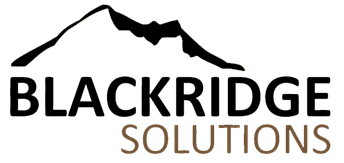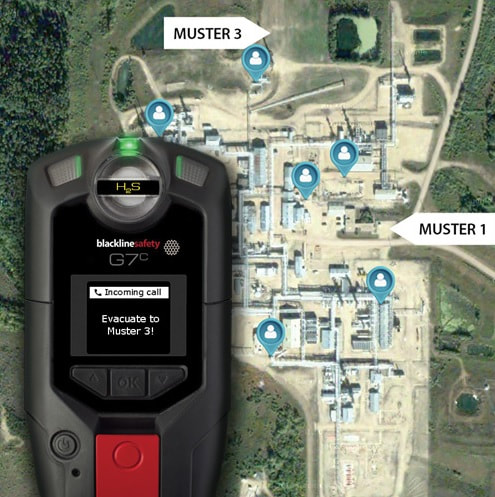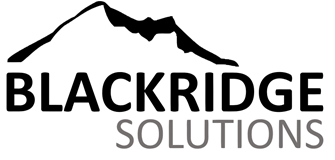Ensuring the safety of utility workers is crucial. Advanced technology offers new ways to protect these workers, reducing the risks they face. BLACKRIDGE Solutions is leading the way in providing high-tech solutions designed to make utility work safer and more efficient.
With wearable devices, real-time monitoring systems, and enhanced emergency response tools, utility workers can perform their duties with greater confidence. This article will explore the various dangers faced by utility workers and the advanced safety gear available to them. By understanding and leveraging these technologies, we can create a safer work environment for those who keep our utilities running smoothly.
Dangers Faced by Utility Workers
Electrical hazards are a significant threat to utility workers. These hazards can arise from contact with live wires, malfunctioning equipment, or power line maintenance. Even a small error can result in severe injuries or fatalities. Workers need to be continuously aware of their surroundings and follow strict safety protocols to avoid such dangers. Protective gear and proper training are essential components for mitigating these risks.
High-risk environments are another challenge for utility workers. They often work in harsh conditions, such as extreme weather, confined spaces, or elevated heights. These environments increase the chance of accidents and injuries. Workers must be equipped with the right safety gear and tools to navigate these conditions safely. Regular safety drills and scenario-based training can also help prepare them for any unexpected situations.
Exposure to hazardous gases is a serious concern in utility work, particularly in gas and water treatment facilities. Gases like carbon monoxide or methane can be deadly if inhaled. Utility workers must be equipped with gas detection tools to monitor air quality continuously. Immediate access to safety equipment and clear evacuation procedures can save lives in case of a gas leak.
Advanced Safety Gear for Utility Workers
Smart helmets and glasses are revolutionizing safety for utility workers. These high-tech gear pieces include features like augmented reality displays, real-time data feeds, and built-in communication tools. With smart helmets, workers can access vital information without needing to divert their attention from the task at hand. This technology improves situational awareness and helps workers make better-informed decisions.
Wearable gas detectors are another critical advancement. These devices continuously monitor the air for hazardous gases and alert the wearer to any dangerous changes. The detectors are compact and easy to wear, making them convenient for utility workers who need to move freely. In addition to real-time alerts, these devices often record data, which can be reviewed to improve safety procedures and detect patterns in gas exposure.
Robust communication devices are essential in keeping utility workers safe, especially those working alone or in remote areas. Advanced radios and communication tools ensure that workers stay connected with their teams and supervisors at all times. In emergencies, quick communication can mean the difference between a minor incident and a major accident. These devices also help coordinate teamwork and improve overall efficiency.
Real-Time Monitoring and Alert Systems
Environmental and gas detection sensors are pivotal in safeguarding utility workers. These sensors provide real-time data on air quality, monitoring for harmful gases like carbon monoxide and methane. When dangerous levels are detected, the system sends immediate alerts to workers and supervisors. Knowing exactly when and where dangers arise allows for swift action, preventing potential health risks and ensuring safer working conditions.
Remote health and safety tracking offers another layer of protection. Wearable devices can monitor workers' vital signs, such as heart rate and body temperature, in real time. If any abnormalities are detected, these devices can alert supervisors or medical personnel instantly. This ensures that any health concerns are addressed promptly, reducing the risk of serious medical issues while on the job.
Automated alert and response systems streamline the process of handling emergencies. These systems can trigger alarms and communicate evacuation procedures automatically when a hazard is detected. This automation speeds up response times significantly, making sure that everyone is informed and can react quickly to avoid injury. Having a reliable alert system in place is crucial for maintaining safety in high-risk utility environments.
Enhanced Coordination and Emergency Response
Integration with safety management software creates a centralized platform for monitoring and response. This software compiles data from various safety devices, allowing supervisors to manage safety protocols more effectively. It provides detailed reports and insights, helping to identify areas that need improvement. By integrating all safety measures into one system, coordination becomes smoother, and access to critical information is more straightforward.
Advanced GPS and location tracking are essential for the safety of utility workers, especially those working alone or in remote locations. GPS systems can track workers' exact locations in real time, providing supervisors with up-to-date information on their whereabouts. In case of an emergency, knowing the precise location of each worker ensures quicker response times and more efficient rescue operations.
Emergency response protocols and tools are vital in any high-risk job. Having well-defined procedures and the necessary tools to implement them can make all the difference during an emergency. Tools like portable defibrillators, first-aid kits, and emergency communication devices should be readily available. Training workers on these protocols ensures that everyone knows what to do when faced with a dangerous situation, minimizing panic and maximizing efficiency.
Conclusion
Utility work comes with inherent risks, but technology is making it safer than ever before. By leveraging advanced gear, real-time monitoring, and improved coordination tools, we can significantly reduce these risks. From smart helmets and gas detectors to GPS tracking and automated alert systems, each innovation serves a crucial role in protecting utility workers.
At BLACKRIDGE Solutions, our commitment to safety means providing only the best technologies to ensure that utility workers can perform their duties with confidence. Understanding these tools and effectively integrating them into daily operations can lead to a safer and more efficient work environment.
For more information on how BLACKRIDGE Solutions can help enhance safety for utility workers, reach out to us today at (778) 686-5799 or [email protected]. Your employees' safety is our top priority, and we have the expertise and the right employee safety devices to make a significant difference.







 RSS Feed
RSS Feed